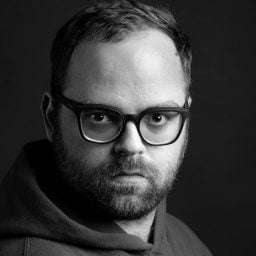Art & Tech
A Massive Refik Anadol A.I. Data Painting Will Anchor the New L.A. Clippers Stadium
The arena will also feature artworks by the likes of Glenn Kaino, Jennifer Steinkamp, and Charles Gaines.
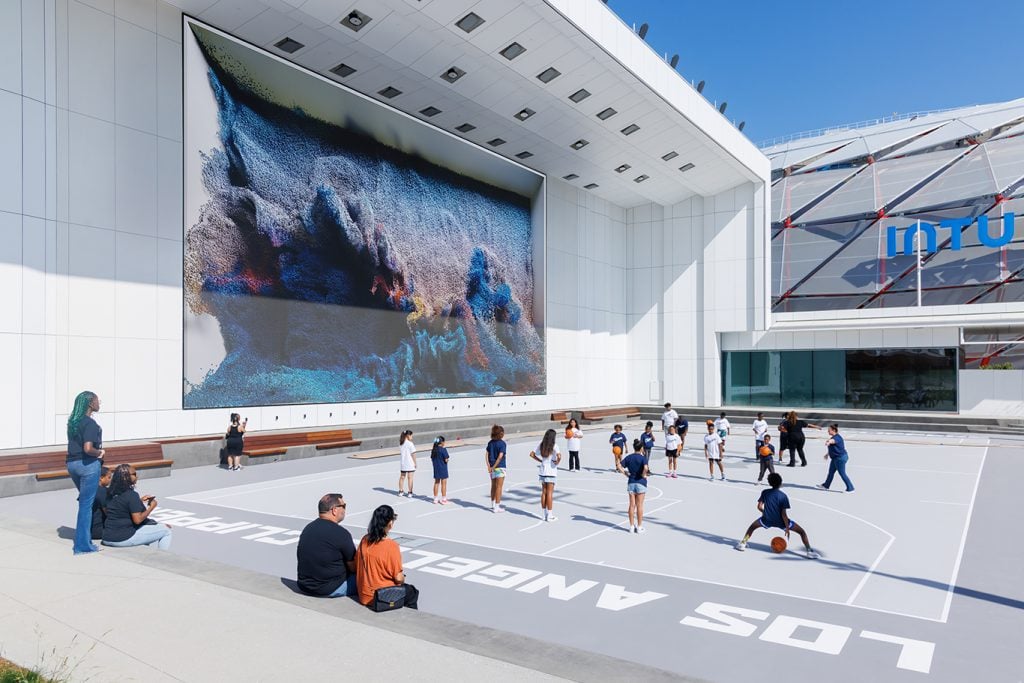
The new basketball stadium for the Los Angeles Clippers will feature massive artworks inspired by the City of Angels from artists including Refik Anadol, Glenn Kaino, Patrick Martinez, Michael Massenburg, Kyungmi Shin, and Jennifer Steinkamp. An additional piece by Charles Gaines is forthcoming.
The artists were commissioned by art consultant Ruth Berson and a jury that included members of the local community to contribute works for the Intuit Dome, the new arena in Inglewood, California. Gillian Zucker, chief executive of the Clippers’ parent brand Halo Sports and Entertainment, said the team hopes to transform the campus into an gathering place celebrating the community of Inglewood. When the venue opens in August, it will also exhibit photographs by Catherine Opie, on loan from the Museum of Contemporary Art in L.A.
“In commissioning these works, we started conversations with these extraordinary artists who have deep ties to Los Angeles and together reflect the make-up of the Inglewood community,” Berson said in a statement. “We showed them the model of the Intuit Dome and its campus. They chose options for their sites, and over the course of a year, they refined their ideas into the major new artworks unveiled today.”
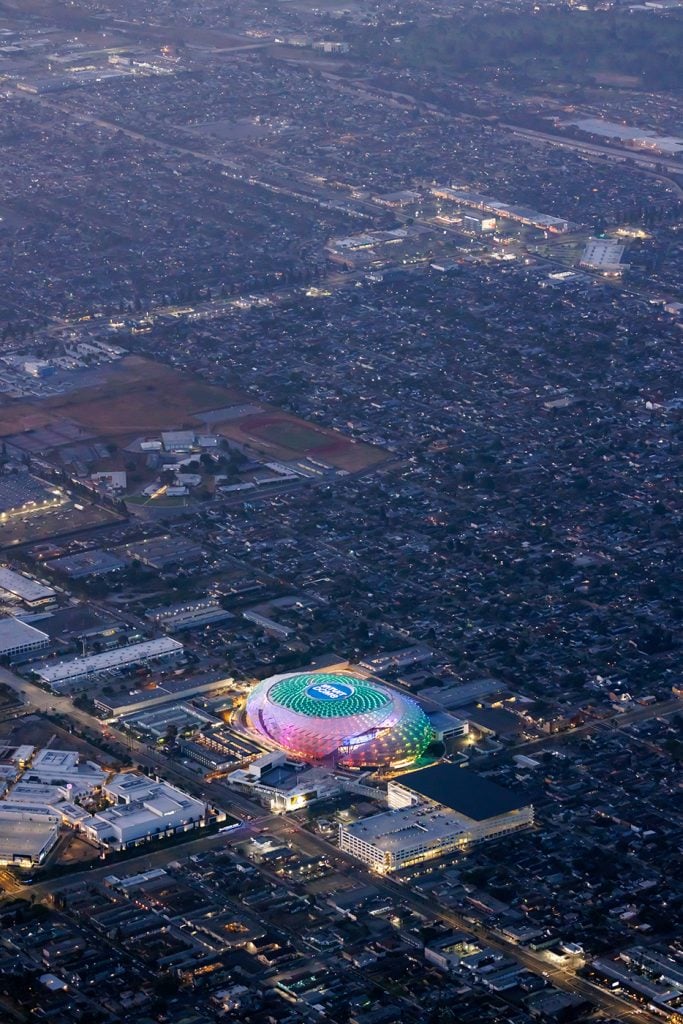
Jennifer Steinkamp, Swoosh (2024). Photo by Iwan Baan.
Anadol’s contribution is a digital painting that will use the facility’s state-of-the-art sensors and real-time game data. Though not a big sports fan, the digital artist, best known for his works leveraging A.I., heralded the Clippers’ owner, Steve Ballmer, an investor and former chief executive officer of Microsoft, and an avid art collector.
“He cares about the Clippers so much and is mathematically inspired by art, so there’s multiple layers of things I like about this project,” Anadol said in a video interview.
He was impressed by the architectural drawings and blueprints for the Dome and, specifically, the location for the installation of his work: on a giant 40 feet tall by 70 feet wide LED screen adjacent to a public basketball court in a park outside the stadium. It would make his piece the largest A.I. data painting in the world, he said.
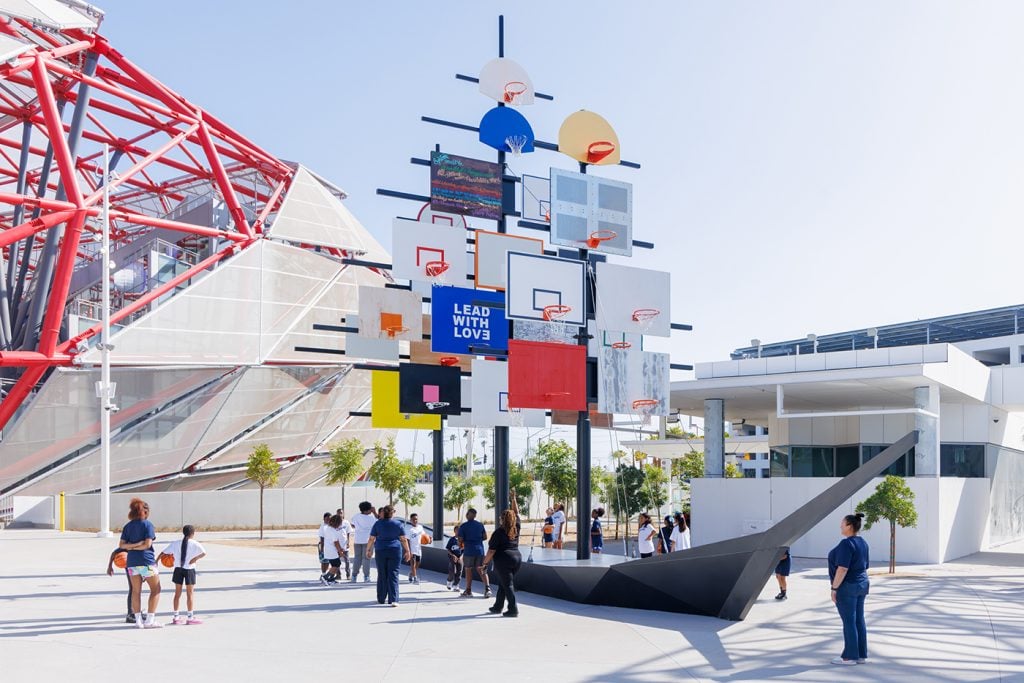
Glenn Kaino, Sails (2024). Photograph by Iwan Baan.
“It’s a public basketball court where the community will play, free and open to everyone. It’s an amazing park. My work is public all the time and trying to create these experiences for anyone and everyone is very important for me,” he said. “It ensures there’s other societal responses for the stadium, so that’s why I got so inspired. It will bring people together.”
The installation, titled Living Arena, contains four chapters—each visualizing data from different sources. Using flight data from the nearby Los Angeles International Airport, “Urban Dreams” visualizes what Anadol called “the sound of Inglewood.”
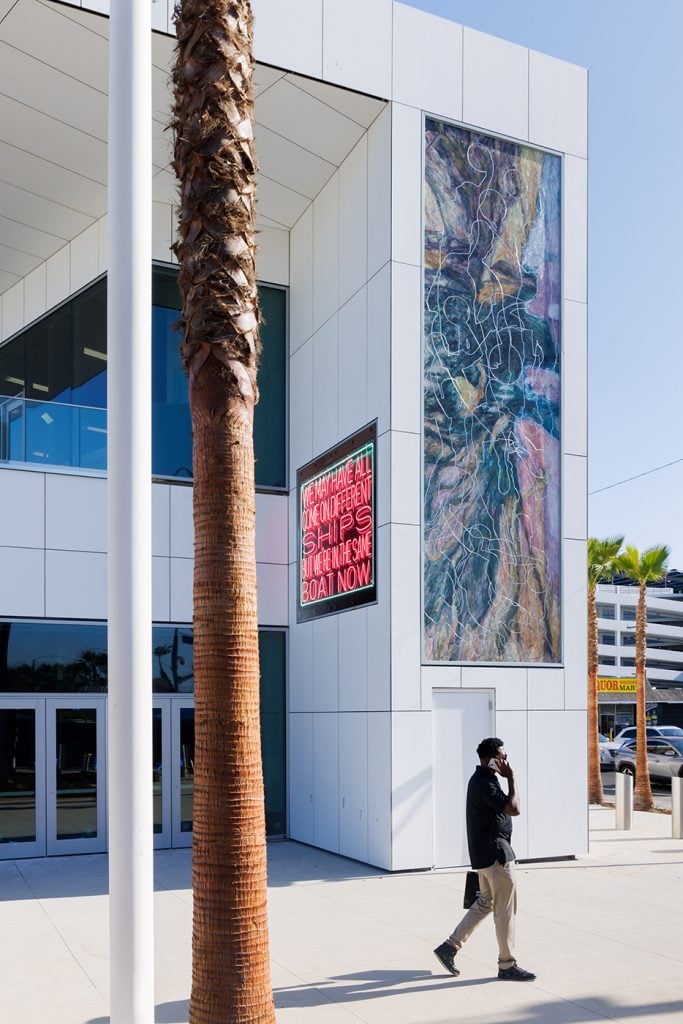
Kyungmi Shin, Spring to Life (2024). Photo by Iwan Baan.
In the next chapter, “Nature Dreams,” uses live weather data from Inglewood including wind direction, temperature, and humidity. He called the wind patterns in the area “super significant” and noted that there is a “beautiful wind tunnel” with gusts that change speed and direction where the stadium is located. Another chapter, “California Landscape,” highlights images from the state’s national parks.
But Anadol is most proud of “Culture Dreams,” which showcases player tracking data from Clippers games. The stadium has some of the most advanced sensors available, he said. When there’s movement inside the arena, it is visualized with a brushstroke outside of it. People will be able to tell whether the team is winning or losing.
“That was a fresh idea I never did before,” he said. “Each game will be different. This idea comes from my belief that the future of architecture will change with A.I. We won’t just think about concrete, steel, or glass. I’m trying to speculate the future of post-A.I. architecture, where it can record the dreams or the memories of the building.”
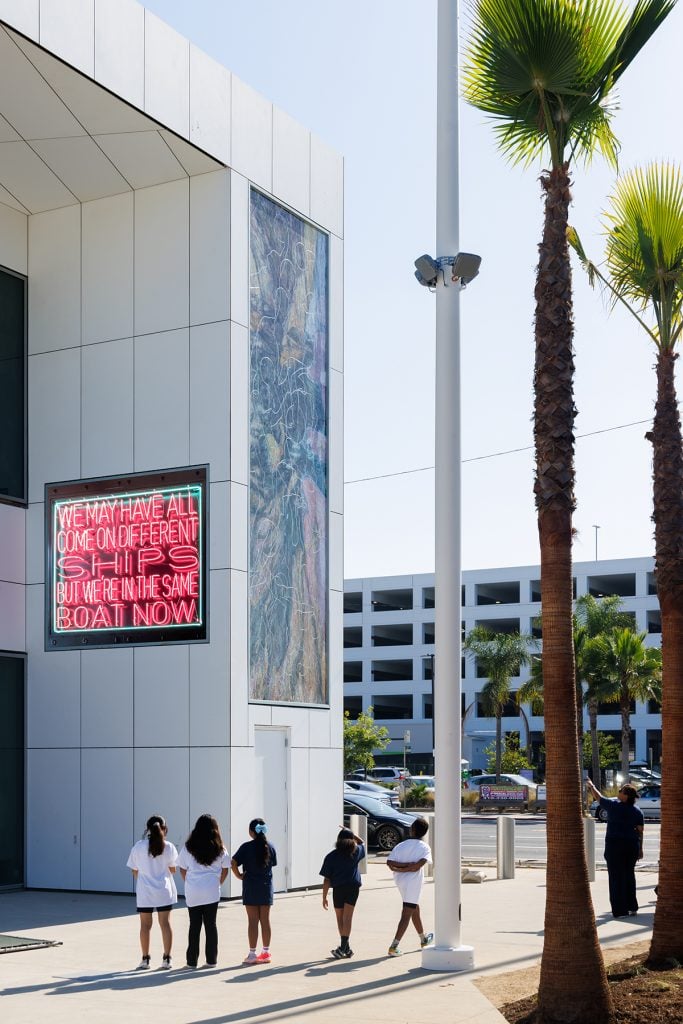
Patrick Martinez, Same Boat (2024). Photo by Iwan Baan.
The other works at the Dome include: Kaino’s massive sculpture, Sails, inspired by the forms of the historic clipper ships that once connected trade routes; Martinez’s sculpture, Same Boat, a reproduction of a statement by the late Civil Rights leader Whitney M. Young in neon; Shin’s stained-glass mosaic, Spring to Life, which draws inspiration from the now-vanished Centinela Springs, a water source that once supported the Tongva people; and Massenburg’s mural Cultural Playground, a montage of the sights and sounds of the city.
Steinkamp, meanwhile, has created a digital artwork titled Swoosh that uses the surface of the Intuit Dome itself, designed by the architectural firm AECOM. The work is a series of five animations that reference invisible forces of nature such as wind and gravity.
“As an artist, I appreciate the opportunities public art engagement creates for the community,” Steinkamp said in a statement. “We can create an architectural-scale emotional experience between the audience, the arts, and athleticism.”
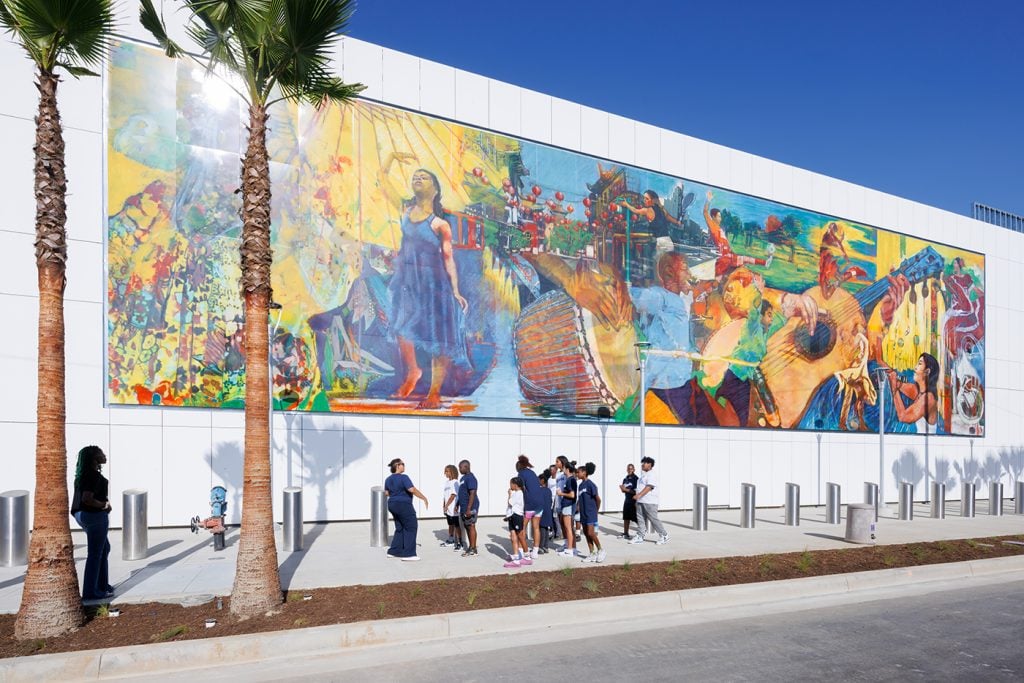
Michael Massenburg, Cultural Playground (2024). Photo by Iwan Baan.
Echoing Steinkamp, Anadol said both art and sports are “part of the cultural context of life” and both “are strong parts of the fabric of the city.”
“It’s incredible to feel they are connected here purposefully, from scratch, not eclectically. They were built up from scratch together architecturally. It’s not like, here’s a stadium let’s put some art. That vision is super inspiring,” he said. “This project really blends arts and sports in the culture umbrella.”

